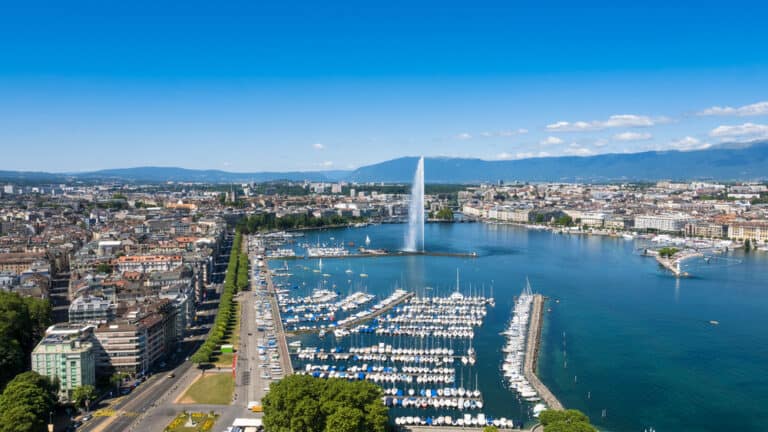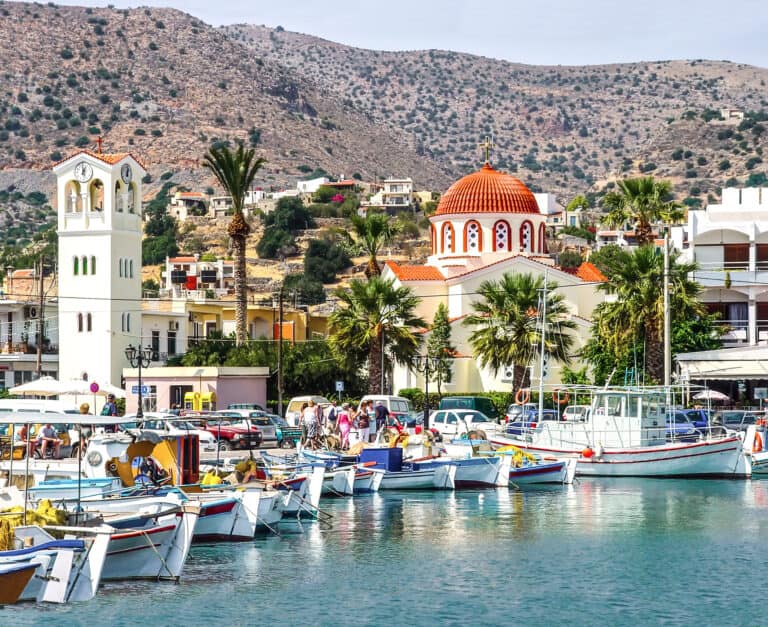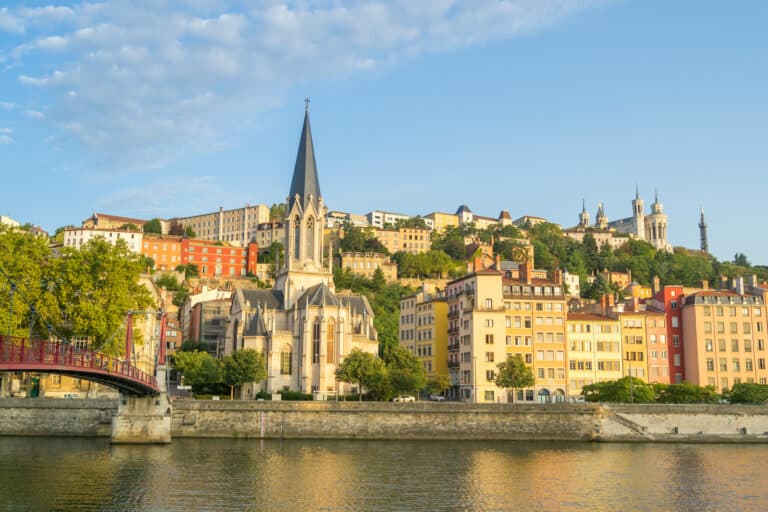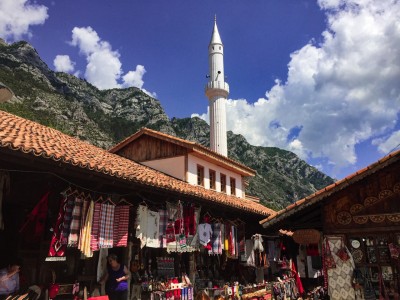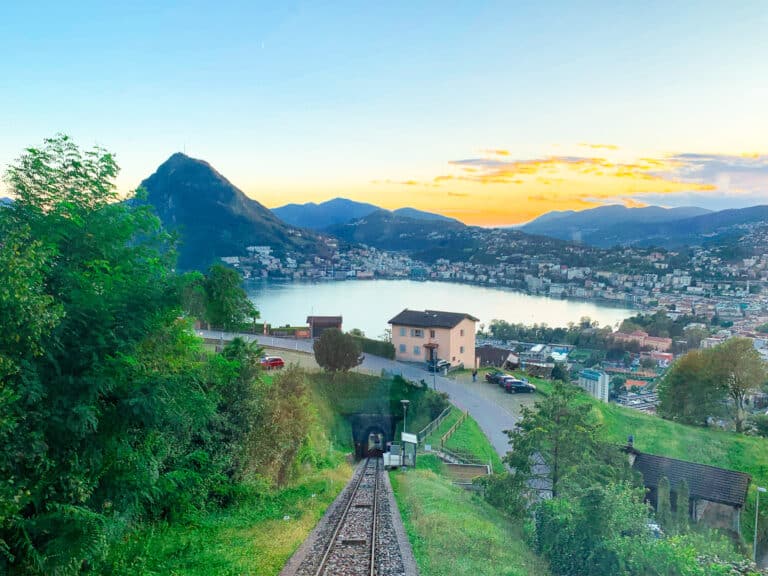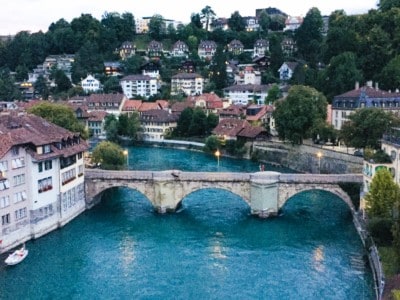An itinerary for one day in Geneva Switzerland

Geneva is the second-largest city in Switzerland and is known for its scenic location near the Swiss Alps, its beautiful architecture, and its world-renowned museums.
Although there are lots of things to see here, one day in Geneva is the perfect amount of time to explore this beautiful city.
It’s enough time to see the main sights and to earmark Geneva for a future visit if you like what you see.
Below is an itinerary for a full day out in Geneva to help you prioritise the things to focus on.
I have also included some practical information to help you plan your trip and make the most of your day.
This post contains affiliate links
Where is Geneva?
Geneva is situated in the French-speaking part of Switzerland in central Europe. It sits on the shores of Lake Geneva (Lac Leman).
It’s around two hours by train to Geneva from the Swiss capital, Bern, and just under three hours from Zurich.
Given its location near the French border, some French cities are within easy reach: Lyon is two hours by train, and Annecy is around an hour away.
The best time to visit Geneva
People often say that the best time to visit Geneva is in the summer when the weather is warm and sunny. This is a great time for leisurely strolls around the lake and for sitting on the terraces outside one of the many cafes and bars in the city.
However, Geneva is a popular destination at any time of the year.
The winter can be quite cold and snowy, but the city is still beautiful this time of year. There are plenty of museums to visit if the weather is bad, and you’ll get to see the city’s Alpine surroundings in all their wintery glory.
This time of year might also suit you if you have longer than a day to spend here and can go into the nearby mountains to indulge in some winter sports.
The weather in Geneva
The climate in Geneva is continental: it has warm summers and cold winters.
The warmest months are June to August, when the temperatures are in the low to mid-twenties in centigrade.
The coldest months are December and January: mean temperatures are around two to three degrees centigrade (although it can sometimes fall below zero).
How to get to Geneva
Geneva is easily accessible by plane, train, or car.
Geneva airport offers flights to destinations all over the world.
The airport is just four kilometres outside of the city (8 minutes by train). So it would be easy to fly into Switzerland, spend a day in Geneva and then head off elsewhere.
Or as I once did, head to Geneva early in the day for an evening flight and spend the time beforehand sightseeing.
If you’re travelling by train, Geneva’s main station – the Geneva Cornavin station – is in the city centre and connects with a number of major European cities. This includes Lyon, Paris, Nice, Zurich, and Bern.
Driving to Geneva is easy too – the city is located near several major highways.
If you’re visiting Geneva as part of a more comprehensive Swiss train trip, consider purchasing the Swiss Travel Pass.
Once you’ve bought this, it allows you to access free public transport (trains, buses, and boats) across its network. It also gives access to a large number of museums in the country.
Getting around Geneva
On foot
The main sights of Geneva are easy to walk to. You can either do this independently, following the itinerary here, or book a walking tour.
There are a selection of walking tours to explore here. These provide tours of some the main sights of the city with a guide who will fill you in on interesting and fascinating local information.
There are also some specific ones that cater for different interests. For example, this art and culture tour, and this chocolate walking tour.
The Geneva City Pass
If you only have a day, you’ll want to maximise your time.
You can buy the Geneva City Pass which gives you free public transport for 24 hours, and over 50 offers (free or discounted entry to museums and lake cruises etc) to use during your visit.
This is particularly good value for money if you want to do and experience several of the things mentioned in this post.
On wheels
If you have limited time, you can also book open-air sightseeing buses that will take you to the city’s main sights.
And this e-bike tour will take you to the main sights on my Geneva itinerary.
Your itinerary for one day in Geneva
With just one day in Geneva, I’d suggest you focus on three areas: the central old part of the city, the lake area, and the Palais des Nations area.
One day in Geneva
Morning: Start your day in the old town. Head to the Cathedrale Saint-Pierre via the Mont Blanc bridge for wonderful views of Lake Geneva. Pop into the Jardin Anglais and wander through the Place du Molard Square. Once at the cathedral, climb to the top for great views across the city and part of Lake Geneva. Pop in the Parc des Bastions and see the Reformation Wall.
Lunch: Stop off for lunch in one of the restaurants in the Place du Bourg-de-Four, the oldest square in the city.
Afternoon: See the lake in the afternoon. Walk off lunch with a stroll around its shoreline and see the Jet D’Eau. Go to the city’s right bank to see the Palais des Nations, the Broken Chair sculpture, and the Geneva Botanical Garden. Or visit one of Geneva’s fascinating museums before heading back to your destination.
Read on for more information on the things to focus on with one day in Geneva.
The old town
Geneva’s old town is about a twenty-minute walk from the main train station. Alternatively, you could catch the bus or tram, which takes around 10 minutes.
The old town is a lovely historic area and there’s plenty to see and do here. You should devote some time to exploring its quaint streets, historic buildings, and many shops.
If you can stay into the evening, this is worth it: the old town is lit up and has a lovely atmosphere.
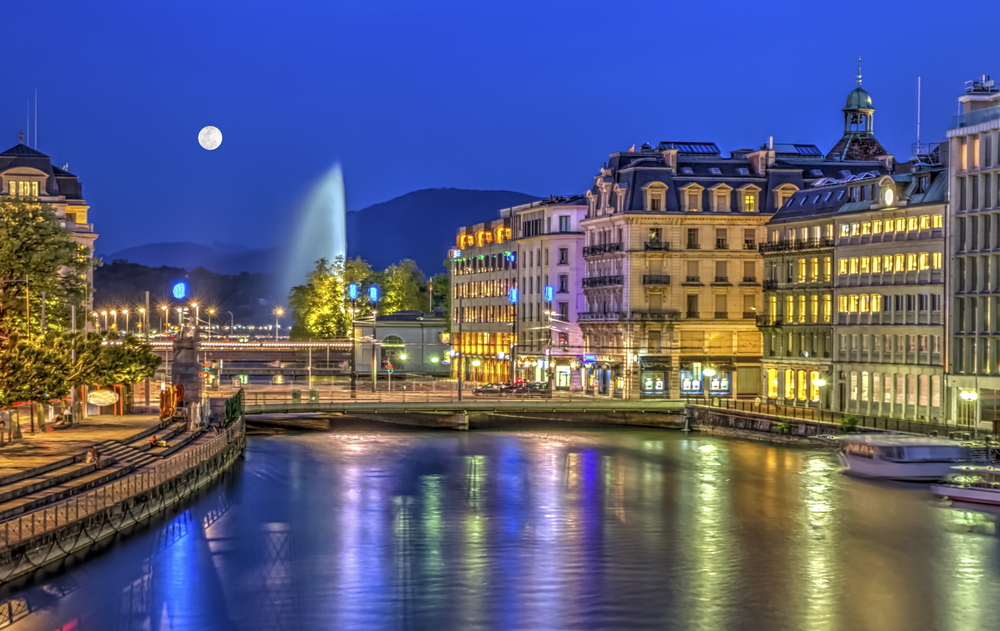
Below are some the highlights of the old town.
The Cathedral of Saint-Pierre
One of the highlights of the old town is the 12th-century St. Pierre cathedral. It is one of the most important landmarks in the city.
It has a long history, having been founded in the 4th century as a Roman Catholic cathedral, but then converting to a Protestant church during the Reformation.
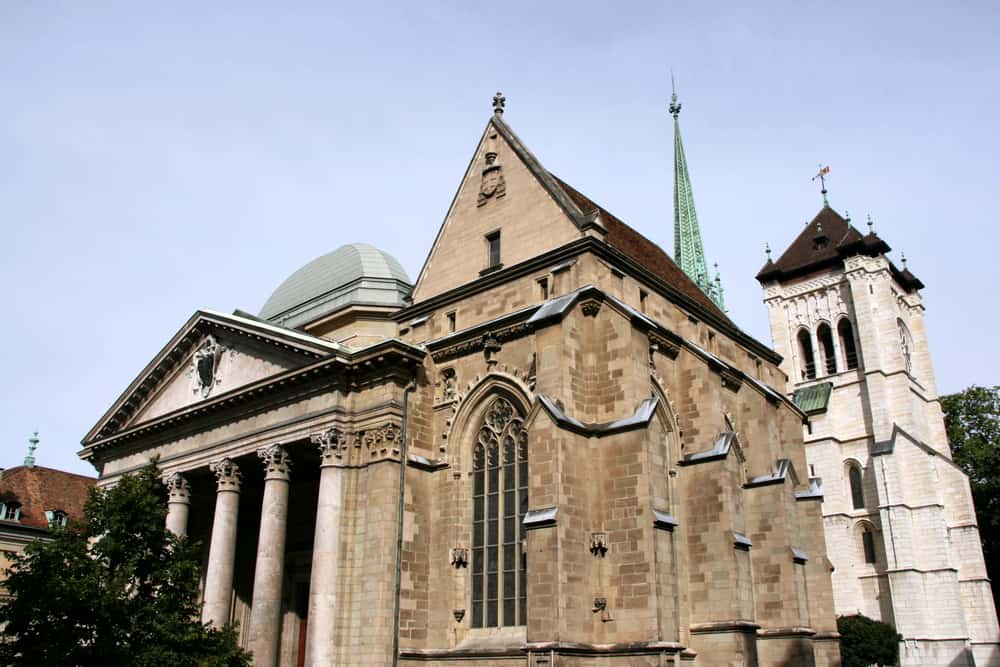
You can explore the cathedral when you visit. This gives you the chance to see the chair used by Protestant Reformer John Calvin in the 16th century.
When you visit, just make sure you climb to the top of the towers: this is one of the best places to get breathtaking views over Geneva and the lake.
The Jardin Anglais
You can walk from the train station over the Mont Blanc bridge to the Jardin Anglais (English Garden).
This is a beautiful 19th-century garden by the side of the lake with manicured lawns, fountains, sculptures, and pretty flower beds.
If you visit the garden, see the Floral Clock (L’horloge fleurie). This is a flower clock made to commemorate Geneva’s role in the watchmaking industry around the world.
At 2.5 metres, it apparently has the world’s longest second hand.

If you’re in the city around Christmas time, you can also pop into the garden to see the Christmas market.
The Place du Molard Square
The Place du Molard is a square in the old town. Surrounded by picturesque medieval buildings, cafes, and bars, it’s a popular gathering place for locals and tourists.
In the centre of the square is a pretty fountain, and there is also a 16th-century tower here that you can go into.
The square is near Geneva’s main shopping streets, so is also a place to head to if you want to buy something on your day out.
The Parc des Bastions
Bastions Park is a public park beside the old town and another of the many beautiful places in the city. It features a tree-lined boulevard, neat lawns, and plenty of benches for people-watching.
There are also six massive chess boards here if you fancy a game!
The Reformation Wall is also within the park.
This is a 100-metre long monument that commemorates the leading figures of the Protestant Reformation (including John Calvin, John Knox, William Farel, and Theodore Beza).

The Place du Bourg-de-Four
Near the cathedral is the Place du Bourg-de-Four, the oldest square in Geneva. It’s flanked by old historical buildings and there’s an 18th-century fountain in the middle.
Today, the square is a popular place and is surrounded by cafes, restaurants, and shops. On warm days, it’s filled with people enjoying the sun and the lively atmosphere.
I’d suggest you plan your day so that you stop off here and have lunch – or at least have morning coffee or afternoon tea.
Lake Geneva
Geneva is a stunning lakeside city in Switzerland, and a walk along the shores of Lake Geneva is one of the key things to do on a trip here, especially in the summer months.
The lake is surrounded by picturesque mountains, and the views are wonderful.
The best way to experience the lake is to stroll along the promenade (the Promenade du Lac Leman), which stretches for over three kilometers.
You may not have time to walk the whole way on just a day trip, but you can still do some of it, and I’d definitely recommend this.

Along the way, you’ll pass by beautiful parks, monuments, and public squares. There’s also plenty of places to take a break and enjoy a drink or bite to eat in a cafe or restaurant.
The Jet d’Eau
On a walk around the lake, you’ll get to see the Jet D’Eau.
The Jet d’Eau, or water jet, is one of the most iconic sights in Geneva. It first came to the city in 1886, when it was installed to help control the city’s water system.
Originally intended to be a temporary addition, the jet soon became one of the city’s famous landmarks and moved to its current position in the middle of the lake.

The jet propels water 140 metres into the air and is visible all over the city.
The Palais des Nations (the Palace of Nations)
After seeing the lake, I’d suggest catching the bus up to the area of the Palace des Nations (this takes around 30 minutes).
The Palais des Nations is the former headquarters of the League of Nations and is now the United Nations’ headquarters. Built in the early decades of the twentieth century, the building is an important centre for international diplomacy.
It’s in a beautiful setting in Ariana Park on the shores of Lake Geneva and with views of the Alps, so it is worth the walk for this alone.
However, depending on the day you visit, you may also be able to book a tour of the building.
You can also book a walking tour around the United Nations area here.
The Broken Chair sculpture
Near the Palais des Nations is the ‘Broken Chair’ sculpture, a massive and striking 12-metre high structure.
The structure was constructed in 1997 and is a giant chair with a broken leg. It “symbolises the campaign against landmines”.
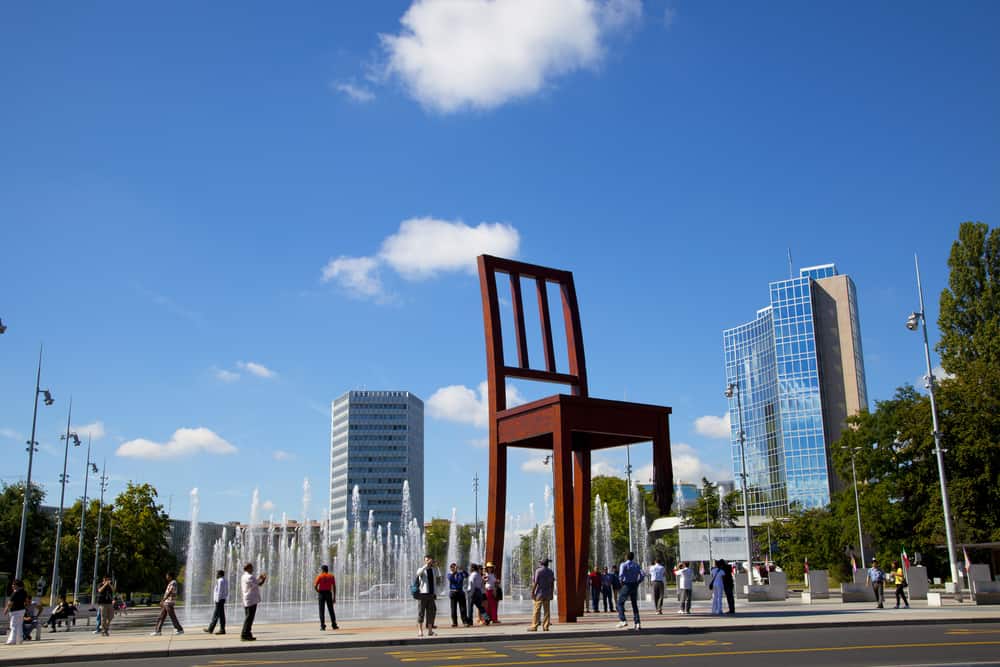
The Conservatoire et Jardin botaniques de Genève
Nearby is Geneva’s Conservatory and Botanic garden, the “largest public botanical garden in Switzerland”. It is about a 10-minute walk from the Palais des Nations.
The garden was founded in 1817 and now covers an area of almost 70 acres. There are various gardens to explore, including a rose garden, rock garden, winter garden, and Japanese garden.
There is also an arboretum, greenhouses, a playground, and a zoo.
Geneva’s museums
Geneva has a variety of museums you can choose to visit, depending on your interests.
The International Red Cross and Red Crescent Museum
Geneva’s role as a world centre for diplomacy and international organisations is reinforced by it being the home of the International Red Cross and Red Crescent Museum. This is dedicated to the history of its work and is one of the main attractions in the city.
Visitors can learn about the role of the Red Cross in providing humanitarian aid during times of war and natural disaster, as well as its work to promote peace and respect for human rights.
The museum is open every day except Mondays.
The Musée d’art et d’histoire
This museum is an excellent choice if you’re interested in art and history.
It has a massive collection that covers fine arts, graphic arts, archaeology, and applied arts (this covers some diverse areas such as textiles and furniture, weapons and armour, and musical instruments).
There are also collections on precious books and watchmaking.
The museum is open from Tuesday to Sunday.
CERN
Science buffs can visit CERN (the European Organization for Nuclear Research Museum). This fascinating museum tells the story of the world’s largest particle physics laboratory, including the Large Hadron Collider.
Founded in 1954, CERN has played a leading role in discovering many of the fundamental particles that make up our universe and is well worth a visit if this subject interests you.
Other museums in Geneva
Other museums in the city include the Patek Phillipe Museum, which details the history of watchmaking, and the Musee Ariana, a museum dedicated to glass and ceramics.
There is also the Museum of Modern and Contemporary Art for art lovers.
Other things to do in Geneva
In this post I’ve summarised some of the key things you should do with one day in Geneva.
But there are also other things to see and do.
The Parc de la Grange
The Parc de la Grange is another beautiful park in Geneva and the largest area of greenery in the city.
It is located near the lake’s promenade, and is a great place to take a walk or have a picnic. The park has several gardens you can walk around in, including the city’s largest rose garden, and two theatres.
Boat trips
Geneva is a perfect place to go boating, especially during the warmer months, and there are plenty of boat trips available to choose from.
One of the most popular boat trips is the one that takes you around the lake. You can enjoy beautiful views of the Alps and the cityscape as you cruise around the lake.
This trip is just an hour long so is perfect if you only have a day in Geneva.
And if you’re interested in learning more about Geneva’s history and culture, there are also a number of boat trips available that include guided tours of the city’s sights. This tour does just that.
For other boat trips, click here.
The Mont-Saleve cable car
If you want another way to see the stunning Alps (including some of the French Alps), then the Mont-Saleve Cable Car offers this.
The cable car takes passengers up to the top of Mont-Saleve, where they can enjoy stunning views of the city and the surrounding mountains.
The ride up is beautiful. At the top, there are plenty of hiking trails to explore and cross-country ski runs in winter.
It’s one of the top tourist attractions here and one of the best things to do if you want to take in views of the area from up high.

You can get to the cable car by bus from Geneva Cornavin station to Veryrier-Douane or Veyrier-Tournettes. It is then a 10-minute walk.
The Bain des Paquis
The Bain des Paquis is a public lido and ‘beach’ area on the lakefront and is a popular spot for swimming, sunbathing, and relaxing. It has spectacular views of the lake and Jet D’Eau so is a great place to head to on a hot day to relax in wonderful surroundings.
It is open year-round, so you can also visit during the winter months.
There is also a sauna and hammam here.
One day in Geneva
I hope you have a great day trip to Geneva, especially if it’s your first time. It’s a fascinating city to visit, with plenty to do year-round.
If you enjoy your day trip, you can return at a later date to see more things, or to combine it with visits to other nearby cities such as Lyon, Bern, Lausanne, and Zurich.
Other ideas for European day trips and short breaks
My website has lots of posts on other destinations in Switzerland that you might be interested in visiting. There are also other ideas for day trips and short breaks in Europe.
You may be interested in my ideas that include:
- Lucerne in winter
- A day trip to Lugano in Switzerland
- Things to do in Zurich in winter
- A day trip from Zurich to the Rhine Falls
- One day in Bern
- Top day trips from Bern
- A short break to Varenna in the Italian Lakes
- 2 days in Lisbon
- One day in Berlin
- A visit to the Alhambra in Spain’s Granada
- 2 days in Lyon
- A weekend in Bath, England
- 2 days in Munich in Germany
- 3 days in Edinburgh, Scotland

